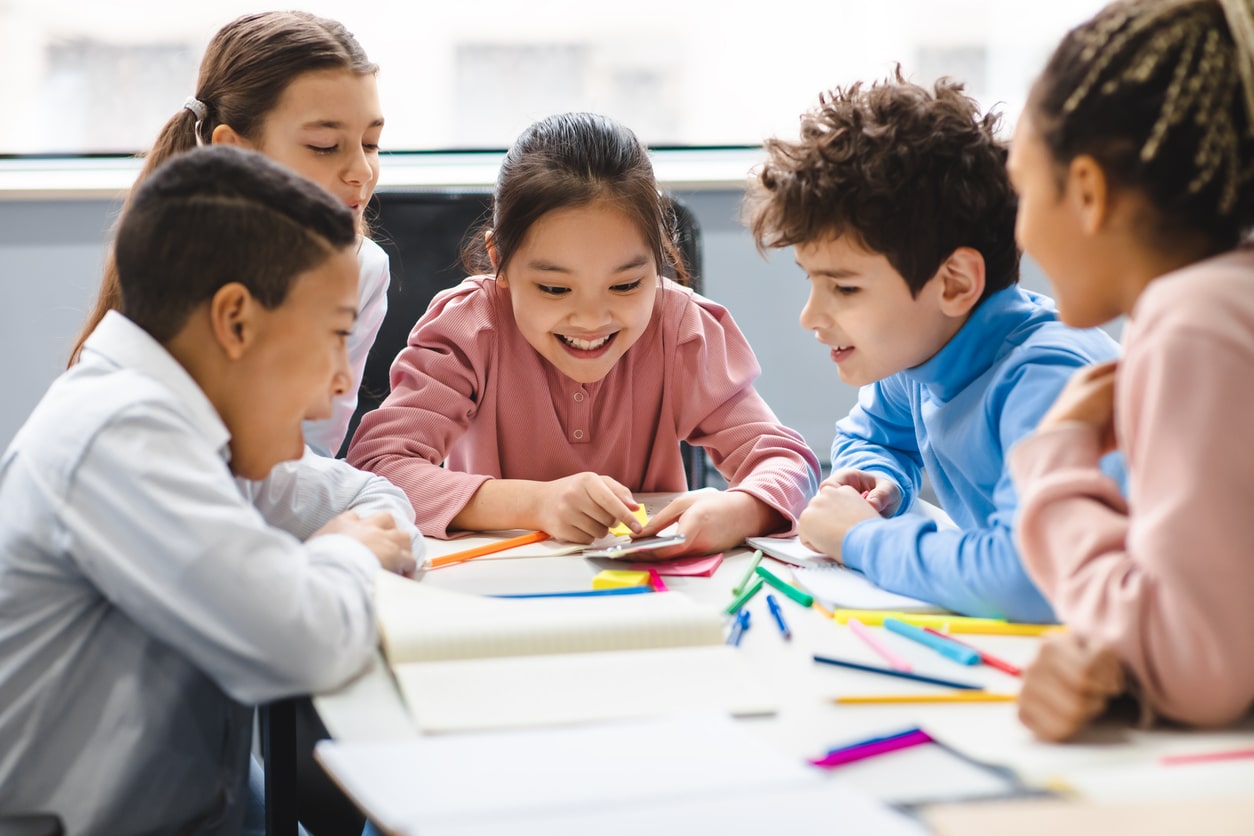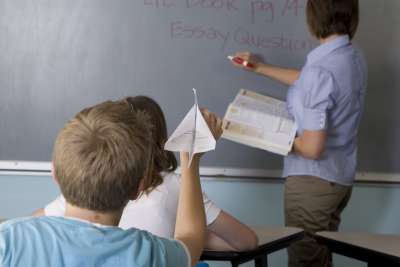The basics of centers - how they work, how to create one, and more
A learning center is a self-contained section of the classroom in which students engage in independent and self-directed learning activities. Get information on learning centers and how to incorporate them in to your instructional routine using this advice.What is a Learning Center?
A learning center is a self-contained section of the classroom in which students engage in independent and self-directed learning activities.
Learning centers allow easy access to a variety of learning materials in interesting and productive manners. Learning centers are usually designed to offer a variety of materials, designs, and media through which students can work by themselves or with others to operationalize the information learned in the classroom. Centers are designed to enhance the learning of concepts, skills, themes, or topics.
This learning can take place after a topic is presented to students, during the course of presenting important concepts, or as an initial introduction to the material in the text.

Why are Learning Centers Important?
Learning centers are important classroom strategies for a few reasons.
Not only do they promote active learning and student engagement, but they are a great tool for differentiated instruction. Differentiated instruction is the means of presenting the same learning materials in various ways, allowing students to access the information in a way that is optimal for their learning. By creating different learning centers, teachers can modify the materials and tasks based on students’ needs and abilities
Learning centers also encourage cooperative learning, as they involve students to engage in group work.
Types of Learning Centers
Most teachers will agree that there are three different types of learning centers: enrichment centers, skill centers, and interest and exploratory centers.
Enrichment Centers
Enrichment centers are designed to offer students a variety of learning alternatives as an adjunct to a common unit of instruction.
These learning centers are typically used after the presentation of important materials or concepts. They are designed to provide students with opportunities to enrich and enhance their understanding of the topics.
For example, after you have presented a lesson on the life cycle of plants, you might assign individual students to a center with the following components:
- Construction of a terrarium using soil, several plants, rocks, etc.
- Observing several plants under the microscope
- Designing an individual observation kit for use in the field
- Preparation of several foods using different types of common plants
- Exploring various news articles on plants in our daily lives
- Creative writing on the uses and misuses of plants in modern society
- Watching a filmstrip on the ecological implications of acid rain on plant life
- Painting a mural on the stages of plant growth
Enrichment learning centers require you to be aware of your students’ learning styles as well as their knowledge about a topic. The enrichment center can provide individual students with varied activities or combinations of activities that differ from those pursued by other students. As such, the center becomes an individualized approach to the promotion of the topic.

Skill Centers
Skill centers are typically used at the elementary level, more so than at the secondary level. Students may work on math facts, phonics elements, or other tasks requiring memorization and/or repetition.
Skill centers are similar to enrichment centers in that they are used after the initial teaching of a concept or skill. Their difference lies in the fact that students are assigned particular areas in the center as opposed to having free choice of the topics they want to pursue. Thus, after introductory instruction on a particular concept has taken place, you can assign students to various parts of the center to help reinforce the information presented. You must be aware of the various skill needs of your students to effectively assign individuals to the areas in the center through which they can strengthen and enhance these skills.
Interest and Exploratory Centers
Interest and exploratory centers differ from enrichment and skill development centers in that they are designed to capitalize on the interests of students.
These learning centers may not necessarily match the content of the textbook or the curriculum. Instead, they provide students with hands-on experience they can pursue at their own pace.
These types of centers can be set up throughout the classroom, with students engaging in their own selection of activities during free time, upon arrival in the morning, as a “free-choice” activity during the day, or just prior to dismissal. These centers allow students to engage in meaningful discoveries that match their individual interests.
The success of this form of learning center depends on your knowledge of your students' interests. You might want to use student interests that will help pinpoint the specific areas you can use in the design of relevant centers. A paper-and-pencil inventory can provide you with important information about their interests.

Setting Up Learning Centers in the Classroom
It’s important to understand that no two learning centers will ever be or look the same. Centers can range from elaborate displays to a card table set in the back of a room. However, there are some basic aspects of setting up learning centers that you may want to consider.
Establish learning centers as formally or informally as you want—the primary criterion is that they match student interests with curricular needs.
Parts of a Learning Center
Here are some suggestions to get you started:
Title
Provide an interesting title that identifies the center as separate from other classroom activities.
Furniture
Arrange necessary furniture pleasingly and productively. Decide how you will set up chairs, tables, storage facilities, and the like.
Storage
Keep materials in a safe place where they are easily accessible by students.
Space
Consider the use of space within the center. Where will the activities take place? Is there a need for independent study? Will large- or small-group instruction take place within the center?
Materials
Determine how you will obtain materials. You might be able to obtain materials from parents or the school. You may also want to consider other sources such as local businesses, catalog supply houses, or community agencies.
Location
Consider the physical placement and arrangement of centers in your room. Students need to be able to move to and among centers with minimal disruption and time.
Responsibility
An important consideration in the development of any center pertains to the responsibilities of students and teacher to the center. For example, students need to know who is responsible for cleaning up, who will be sure there's an adequate supply of consumable materials (paper, paint, soil, water, etc.), who will be in charge of evaluation, and so on.
Learning Alternatives
Include a variety of learning alternatives within any center. For example, include a variety of tasks ranging from difficult to easy. Also include activities that relate to various students' interests.
Instructions
Post a set of directions in each center. Plan time to share and discuss each set of directions and/or routines with students as part of one or more introductory lessons.
The Sequence of Activities
It may be important to consider how activities within a center will be sequenced. That is, will students need to complete one or more specific activities before moving on to more complex activities later?
Number of Centers
You will need to decide on the number of centers you want to establish in your classroom. Base your decision on your management skills as well as the needs of your students. You might want to start with a single center and, as you and your students gain more competence in designing and using the center, develop additional centers later in the school year.
Assignment
Consider assigning students to selected centers and offering them opportunities to select centers on their own.
Management System
You can ensure the success of your centers by teaching your students familiar routines (how to move between centers, and how to work cooperatively). Devote several weeks at the beginning of the year to teach these routines.
Time
Talk with students about the amount of time necessary to engage in or complete the activities within a center. It is not critical for students to complete all the activities within a center.
Help!
Establish a procedure or routine that will allow students to signal when they are having difficulty with a specific center activity.
Assessment
Decide on the nature and form of assessment for the center(s). Will assessment be the responsibility of the students or the teacher? How will it be accomplished—informally (discussions, observations) or formally (skills test, chapter exam)?

Suggested Learning Centers
Elementary School Learning Center Ideas
- ABC/Spelling Center
- Art Center
- Pocket Chart Center
- Free Reading Center
- Storytelling Center
- Big Book Center
- Numbers Center
- Puzzles/Blocks Center
- Science Center
- Water Center
Middle School Learning Center Ideas
- Listening Center
- Writing Center
- Readers Theatre Center
- Free Reading Center
- Drama Center
- Poetry Center
- Map and Chart Center
- Invention Center
- Biography Center
- Weather Center















